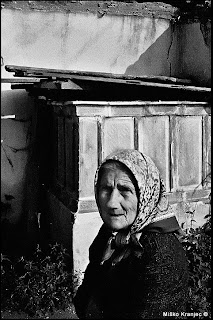I’m looking forward to the year ahead. It feels fresh, like a clean page. Ironic as it may sound, I’m looking ahead by looking at the past – fascinated by how the past looks filtered through each additional decade. I’m amazed, thankful, and still filled with wonder and hope. While I’m not making a public list, there’s a good one here by Lisa Romeo. And Patry Francis writes a thoughtful piece here.
There’s a reason I’m looking ahead by looking back, and it has to do with the novel I’m writing. I promised I’d make no public lists, but there’s a relevant one here by C. M. Mayo (via novelist Christine Baker Kline’s blog). And in working on that novel-in-progress, I get to look back at San Francisco in a different era, since it’s one of the settings for the story. I miss that city I once loved living in, and I long to travel there again. It’s the place where I truly fell in love – with the man I would marry, and with the city itself where we joined our lives together. So I’m having lots of fun revisiting it in my mind and looking at old photographs and maps for research, and you can expect more San Francisco related posts in the coming year.
Flashback to 1978:
We were broke – just out of school, having moved west with little more than the clothing that would fit into suitcases. We found jobs and managed to afford a tiny apartment in San Francisco’s Western Addition, which was sparsely outfitted with essentials borrowed from two of Kevin’s sisters who live in the Bay Area. For months we subsisted on banana squash (only 7 cents per pound), rice, and canned soup.
Those first few months were turbulent times in San Francisco’s history. In November, the Rev. Jim Jones, cult leader of The People’s Temple (which had a headquarters building located on Geary Boulevard not far from where we lived) led nearly 1000 followers at his South American settlement in Jonestown, Guyana in mass suicide by drinking Kool-Aid laced with cyanide. Less than two weeks later, San Francisco Mayor George Moscone and city supervisor Harvey Milk would be assassinated at San Francisco City Hall by former city supervisor Dan White. After so much tragedy that month, it was one of those years that people were glad to see coming to a close.
Bill Graham’s Winterland Ballroom was closing for good at the end of that year with a final concert on New Year’s Eve. It wasn’t quite the end of the 1970s decade yet, but the end of that era could be felt approaching. The Winterland had been the site of The Last Waltz, The Band’s big farewell concert on Thanksgiving 1976 which was filmed by Martin Scorsese. Back when a farewell concert was truly a final show, a single event – unlike farewell tours these days that seem to go on endlessly. Booked for the final show at the Winterland were the Grateful Dead, New Riders of the Purple Sage, and the Blues Brothers. In a nod of thanks to the Grateful Dead’s loyal fans, the Deadheads were listed on the Marquee along with the performers.
Our apartment was about five blocks west on Post Street from the Winterland. We were too broke to afford tickets, but on the day of the concert we took a walk to the Winterland, which was located at the corner of Post and Steiner Street. We wanted to photograph the building, which was draped with Grateful Dead banners. Deadheads were camped out in line, and it was pure serendipity that Bill Graham happened to come out to talk to the fans while we were passing by.
We got to see some of the show on New Year’s Eve anyway. Not in person, but through a broadcast on WQED, the local PBS television station which aired the eight hour show live. After the Winterland closed, the building was torn down in 1985. Bill Graham continued his career as a concert promoter until 1991 when he died in a helicopter crash.
1978 was a memorable year – one of life changes, of starting out on a journey together, of looking forward. Now, I feel that same sense of things shifting and clicking into place, of new things opening up. Maybe it’s simply because we’re about to enter a new decade, but I can hear something in the air. I can feel it. I can’t make out the tune yet, but it doesn’t feel like a last waltz. Whatever the music, I’m poised for a good dance.
Happy New Year!
[In This Light will return to the regular weekly schedule on Sunday, January 10th.]Photo Credits: All photographs of Bill Graham and the Winterland are copyright © by Kevin Scanlon, used by permission.





































